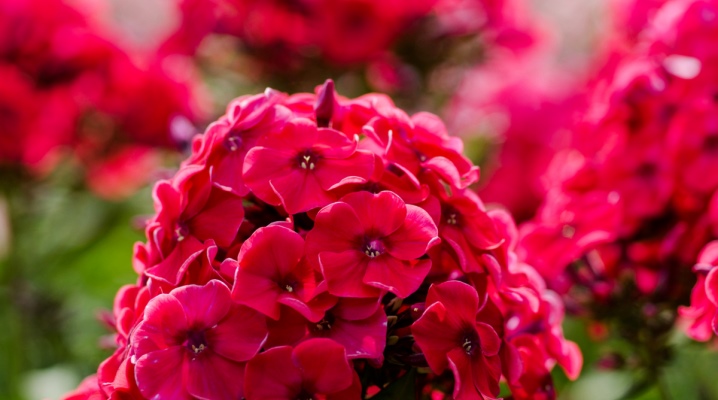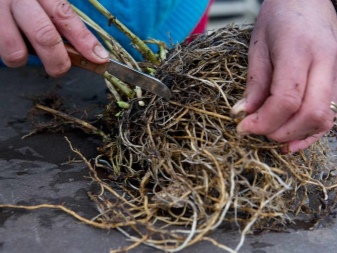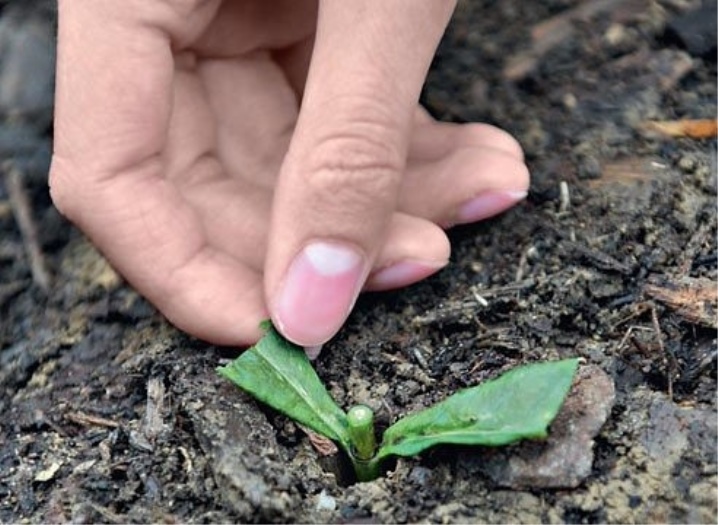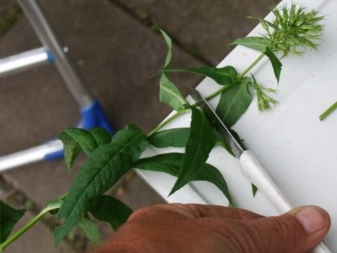How to propagate phlox?

Phloxes are perennials and can grow in one place for several years in a row. He is not capricious in care, annually delight gardeners with abundant and lush flowering. From the material in our article, you will learn how to propagate phlox.


Reproduction methods
To date, 6 methods of phlox reproduction are known. Florists use almost every one of them. Consider the methodology for performing each method.
By dividing the bush
This method is considered one of the most popular. It is better to do this in spring or early autumn (immediately after flowering or at the very beginning). So the delenki will have time to take root. You can share the bush in the summer, but this is only when an urgent transplant is needed.
You can divide the bush that is 4–5 years old. The procedure for dividing a bush does not take much time. Having chosen a bush, the perennial is dug out of the ground, the soil is removed from its roots, the necks of the roots are cleaned
Then they are separated from each other, the roots are carefully separated, leading to different stems.


It is necessary to divide the bush in such a way that on each division there are rudiments of stems or eyes, as well as roots. Immediately after separation, the cuttings are planted in the ground to prevent the roots from drying out. When planting is postponed for some reason, it is necessary to sprinkle the planting material with wet soil or dip it in a clay chatterbox.
You don't have to dig out the bush you like. In this case, a part of it is separated, which is divided into several parts. The hole left over from the excavated part is covered with soil. Over the summer, the rest of the perennial will grow, next year it will be possible to separate a part from it on the other side.

Stem cuttings
This phlox propagation method is very effective and suitable for novice florists. They are engaged in it during the active growth of the stems before the formation of buds. The optimal time of the year is considered to be the period from May to June. For cuttings, developed green shoots from healthy plants are chosen.
They are cut in such a way that each part has at least two knots. The lower cut is made under the stem node, cut from above at such a distance that at least 2 cm remains from the upper node to the cut, all the lower leaves are cut off, some of the upper ones are left. After that, the cuttings are planted in pre-prepared boxes for seedlings or immediately in open ground of a fertile and loose type.

When planting in boxes, a small layer of vermiculite or sifted sand (no more than 2-3 cm thick) is sprinkled on top. If they are planted in open ground, do not forget about a layer of peat or leaf humus, only after that sand or vermiculite is poured onto the ground. Planting is carried out in moist soil with a row spacing of 8 cm and a step of no more than 5 cm.
Boxes with planting material are removed in a greenhouse for root formation, they are shaded from direct sunlight, and watered twice a day. Rooting takes place within two to three weeks, as indicated by young shoots on cuttings. After that, the cuttings are planted for growing on a seedbed with a step of 15 cm and a row spacing of 20 cm. They will stay here until next spring.
If for some reason it was not possible to cut phloxes in early spring, you can cut cuttings in early autumn (in mid-September). In this case, they are planted directly into the ground at an inclination of 35 degrees. Mandatory mulching with peat or fallen birch leaves. If they are engaged in cuttings in the fall, only the upper parts of the shoots are taken, since the lower ones have time to woody by this time.

Leafy cuttings
Phlox are unique plants, any part of them is suitable for reproduction. Leaves, as planting material, become suitable in early July. It is necessary to pick up leaves from mature shoots, cutting off a leaf with an axillary bud and a thin part of the stem with a knife blade. After that, the petioles are planted in prepared containers with light nutritious soil.
A small layer of vermiculite (no more than 1.5 cm) or sand is poured on top. The planting depth should be no more than 2 cm, the distance between the leaves should not exceed 5 cm. It is necessary to plant the planting material in such a way that the leaf is placed at a slight slope. In this case, the axillary bud with part of the stem should be in the ground.

After planting the cuttings in containers, cover them with plastic wrap or glass and put them in a shaded greenhouse. The optimal conditions for root formation are considered to be a temperature within + 18-20 degrees. All the time of root formation, it is necessary to monitor the state of moisture. The upper vermiculite or sandy layer should not dry out.
Planting care will consist in daily spraying of the stalks with water at room temperature. In addition, it is necessary to protect the planting from direct sunlight and do not forget to ventilate the plants to prevent rotting. Petioles take root according to this breeding method in about a month.
In order to increase bushiness, the rooted tops are pinched. The rest of the care does not differ from the basic rules for optimal moisture and bush formation. It is somewhat more difficult to root phlox using this technique; this method may seem ineffective to beginners.
However, leaf cuttings can be planted even in open ground.

Root petioles
This method of rooting is considered time consuming and is therefore not used as often as others. They resort to it when it is necessary to get rid of stem nematodes. The optimal time for the procedure is the period of early spring or late autumn. The bush is dug out of the ground, the best roots are selected, and then cut into pieces of 5-6 cm.
The boxes with soil are prepared, the planting is carried out in such a way that the thickened end of the spine is located above its thin part. The planted roots are covered with 4–5 cm thick sand. The optimum temperature is + 2–3 degrees.

Around the end of February - beginning of March, the containers are taken out into a heated room, remembering to cover them from bright sunlight. In the early stages, you can use some kind of dark matter. Light accustoming should be gradual, as well as the change in the temperature background.
It is necessary to increase the air temperature daily and gradually. The material is removed after the first shoots appear from the ground. They can be planted in open ground for growing in May. However, the permanent place will be determined only after a year.
In the spring, it is easier to propagate phlox with root petioles. In this case, you do not need to store the petioles in the basement: the containers are simply covered with foil and removed for germination and rooting, which occurs approximately 2 weeks after planting. All this time, the temperature in the room should be no more than + 10-15 degrees.
After that, it can be increased to +25 degrees.


Layers
Reproduction of phlox by layering is considered one of the simplest techniques. To do this, it is enough to cover the bushes with fertile soil. Roots on sprinkled shoots appear very quickly. When they are already strong and begin to grow, the layers are carefully freed from the ground, after which they are cut off and planted in the prepared soil.
Uterine bushes for reproduction are chosen in early summer. They are sprinkled with loose soil, after which they are constantly moistened.The stems bent to the ground are covered with soil, which is lightly tamped. Shoots with young roots in August can be planted immediately to a permanent place. Use healthy stems for propagation.

Seeds
Phlox reproduce well by self-seeding. However, it should not be forgotten that this leads to splitting in the offspring and often affects the change in varietal traits. Not only the color of the fluffy hats can change - the quality characteristics change.
This breeding option is used only for breeding. In order to increase the germination of the planting material, immediately before planting, the seeds are removed from the boxes. Given that they have a short germination period, they have to be propagated before winter. The best seeds are taken for planting.
The optimal landing time is from the end of September to the beginning of November. Seeds are planted in open ground or in containers with prepared soil. In the second variant of sowing, the boxes are buried on the site itself. During the cold season, the planting material will undergo natural stratification.

Seedlings with this method of reproduction are abundant, the first pairs of leaves appear from April to May. As they grow up, they are transplanted to a garden bed. To avoid planting too often, it is necessary to plant seedlings in 10-15 cm increments. With proper care, they will grow strong and will delight with lush flowering.
Further care of the plants will consist in timely watering, removing weeds, loosening the soil, forming bushes for more lush bud formation. Despite the fact that the plant can grow in partial shade, it thrives better in the sun. In an open place, the stems are not elongated, and the flowering is more luxuriant. However, varieties with dark flowers are preferable to plant in a semi-shaded area, since their flowers fade in the sun.
August is considered an important month in the life of a perennial. At this time, phlox bloom can be extended. In order to prevent the seeds from setting, after flowering, it is necessary to cut off the caps.
This is a good time to divide, plant, plant, and heal the plant.


How to speed up the rooting process of cuttings?
So that the stems or leaves take root better, forming new shoots, you need to pay attention to several nuances.
- It is better to harvest planting material in cloudy weather. On a hot summer day, it is better to cut the stems or leaves in the shade.
- Before planting, it is preferable to store the harvested cuttings in a container, the bottom of which is covered with damp rags.
- You can process the petioles with growth stimulants. For this, the lower part of the planting material is dipped into the prepared solution and kept in it for about 8-10 hours.
- It will be useful to process the petioles with aloe juice. It is diluted with water in a 1: 1 ratio, petioles are dipped in it and planted.


For information on how to propagate phlox, see the next video.







































































































The comment was sent successfully.